|
|
The Longfellow Bridge, also known to locals as the
"Salt and Pepper Bridge" or the "Salt and Pepper Shaker Bridge",
carries Route 3 and the MBTA's Red Line across the Charles River to
connect Boston's Beacon Hill neighborhood with the Kendall Square area
of Cambridge, Massachusetts. A portion of the elevated Charles/MGH
train station also rests upon the southern end of the bridge. The
bridge is owned by the Department of Conservation and Recreation.
For some reason, the upstream sidewalks are narrower than the
downstream. According to the Boston Herald, the bridge carries roughly
50,000 cars and 100,000 Red Line passengers every day.
| 
|
|
The bridge structure was built on the site of the 1793 West Boston
Bridge and was originally known as the Cambridge Bridge, but was
renamed for Henry Wadsworth Longfellow. Willam Jackson served as chief
engineer and Edmund M. Wheelwright as architect. Wheelwright was
inspired by the 1893 Columbian Exposition and was trying to rival the
great bridges of Europe. The bridge opened on August 3, 1906, and
consists of 11 steel arch spans on masonry piers. The bridge has a
total length of 1,768 feet and supports road, subway, and
pedestrian traffic.
For a time during the 1990s and early 2000s, the bridge's towers bore
several colorful paint splatters placed there by unknown vandals.
These splatters remained on the bridge for several years, but were
eventually cleaned off by the state.
|
Where the Boston end of the bridge passes over Storrow Drive, there
was an old sign hung on the bridge over the roadway that said "Reverse
Curve" that was frequently defaced to read "Reverse the Curse"; after
the Boston Red Sox' win in the 2004 World Series, this sign was
removed during a ceremony presided over by governor Mitt Romney and
replaced with modern graphical road signage. It was slated to be sold
at auction, with the proceeds going to the Jimmy Fund.
On Tuesday, May 1, 2007, a fire broke out under the bridge. The fire
burned through the roof of the bridge and caused the bridge to be shut
down to vehicle and train traffic. This fire also severed Internet2
connectivity to Boston, causing problems with the Chicago-New York
OC-192 route, according to the Internet2 blog.
|
The Longfellow Bridge, like many bridges in the Commonwealth, is in
serious disrepair. "Since 1907, the only major maintenance conducted
on the bridge has been a small 1959 rehabilitiation project and lesser
repairs done in 2002." Engineers estimate rehabilitation could cost
more than $200 million. Final costs will not be known until workers
uncover the bridge and evaluate its pilings. If the maintenance was
performed regularly, the total historical cost would have instead been
about $81 million.
Street Map
Enlarge
|
|
|
|
The Longfellow Bridge
Also known to locals as the "Salt and Pepper Bridge" or the "Salt and
Pepper Shaker Bridge", carries Route 3 and the MBTA's Red Line across the
Charles River to connect Boston's Beacon Hill neighborhood with the Kendall
Square area of Cambridge, Massachusetts. A portion of the elevated Charles/MGH
train station also rests upon the southern end of the bridge. The bridge is
owned by the Department of Conservation and Recreation. For some reason, the
upstream sidewalks are narrower than the downstream. According to the Boston
Herald, the bridge carries roughly 50,000 cars and 100,000 Red Line passengers
every day.
The bridge structure was built on the site of the 1793 West Boston Bridge
and was originally known as the Cambridge Bridge, but was renamed for Henry
Wadsworth Longfellow. Willam Jackson served as chief engineer and Edmund M.
Wheelwright as architect. Wheelwright was inspired by the 1893 Columbian
Exposition and was trying to rival the great bridges of Europe. The bridge
opened on August 3, 1906, and consists of 11 steel arch spans on masonry piers.
The bridge has a total length of 1,768 feet and supports road, subway, and
pedestrian traffic.
Photo 48a, 1976
|
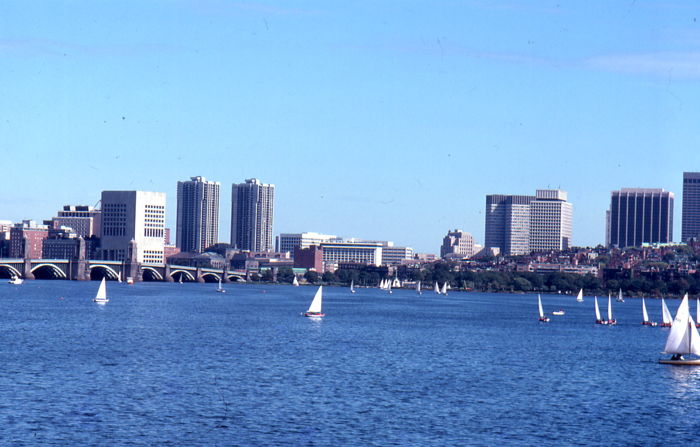
|
|
|
|
The Longfellow Bridge
Note Zachim Bridge in backbround
Photo 108b, Sept 2001
|
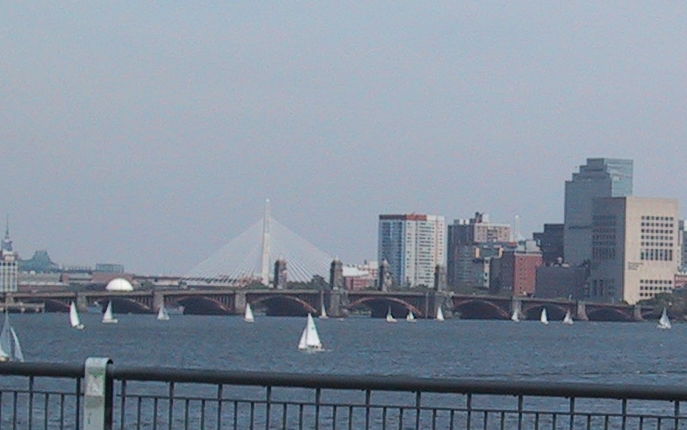
|
|
|
|
The Longfellow Bridge
Also known to locals as the "Salt and Pepper
Bridge" or the "Salt and Pepper Shaker Bridge", carries
Route 3 and the MBTA's Red Line across the Charles
River to connect Boston's Beacon Hill neighborhood with
the Kendall Square area of Cambridge, Massachusetts.
Photo 03, Oct 2011
|

|
|
|
|
The Longfellow Bridge
Photo 06, Oct 2011
|

|
|
|
|
The Longfellow Bridge 2011
Showing the badly rusted condition of the bridge and
a DUKW boat heading underneith.
Photo 10a, Oct 2011
|
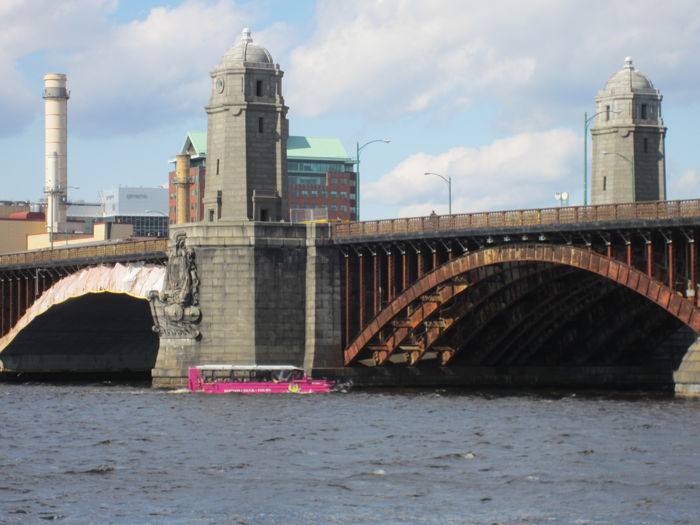
|
|
|
|
The Longfellow Bridge, also known to locals as
the "Salt and Pepper Bridge" or the "Salt and Pepper Shaker
Bridge", carries Route 3 and the MBTA's Red Line across the
Charles River to connect Boston's Beacon Hill neighborhood
with the Kendall Square area of Cambridge, Massachusetts.
Photo 85a, Mar 2012
|
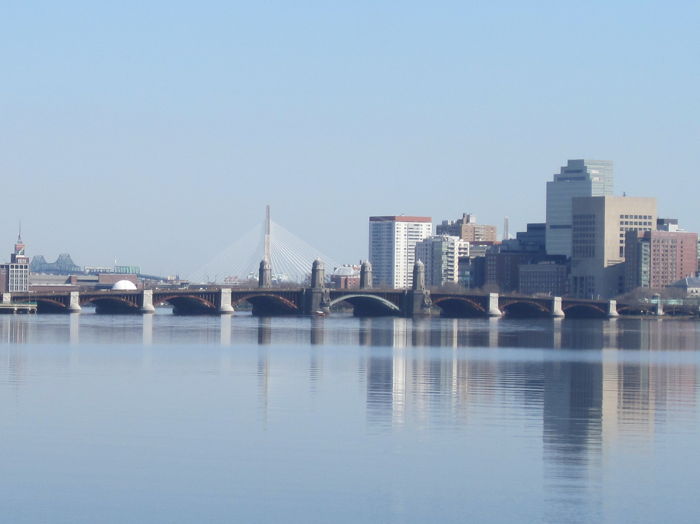
|
|
|
|
The Longfellow Bridge detail, Zakim Bridge in back.
Photo 85d, Mar 2012
|
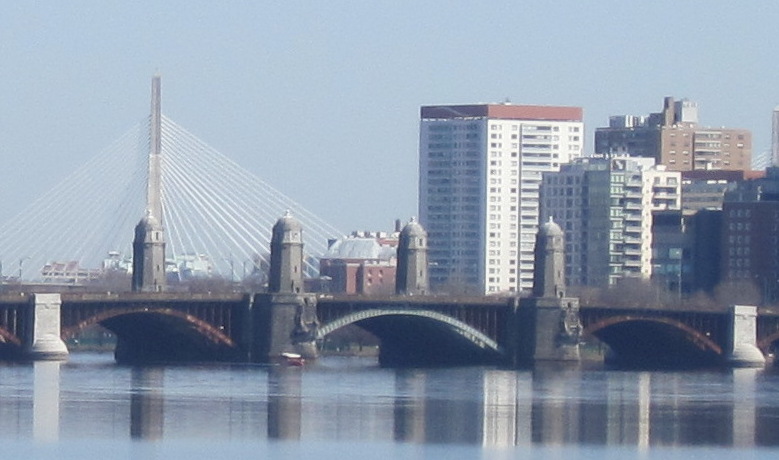
|
|
|
|
Longfellow Bridge
from Cambridge side
Photo 66, April 2012
|

|
|
|
|
Longfellow Bridge
from Cambridge side
Photo 67, April 2012
|

|
|
|
|
Longfellow Bridge traffic
Photo 73a, April 2012
|
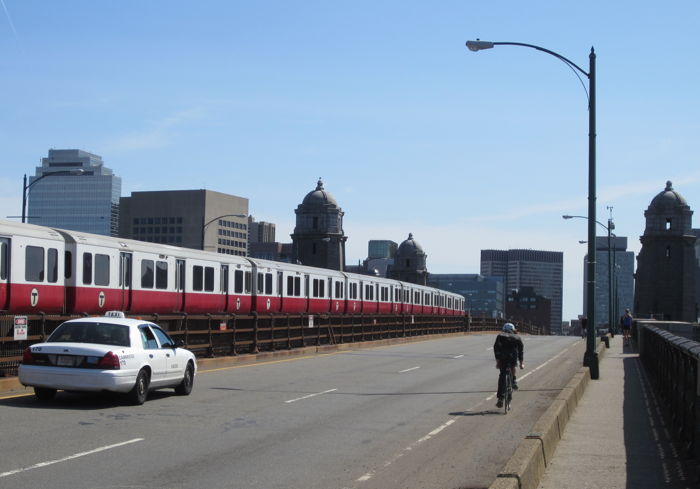
|
|
|
|
Longfellow Bridge
One of the towers
Photo 76, April 2012
|

|
|
|
|
Longfellow Bridge
Detail on pier
Photo 77, April 2012
|

|
|
|
|
Longfellow Bridge
Photo 79, May 2012
|

|
|
|
|
Longfellow Bridge, Cambridge side
Photo 80, May 2012
|

|
|
|
|














